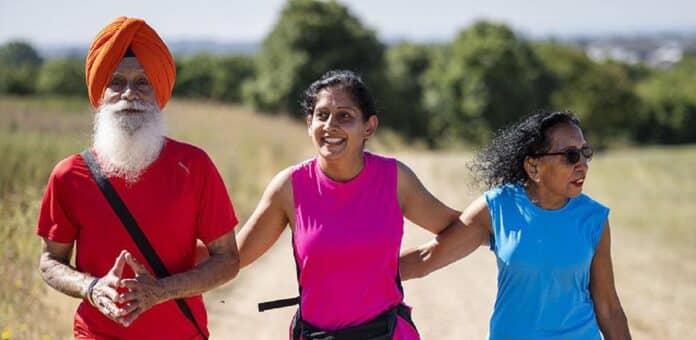Maintaining an active lifestyle has long been associated with numerous health benefits, and recent research has emphasized its positive impact on the quality of Life, particularly among older adults. As populations worldwide continue to age, understanding the factors contributing to a better quality of Life in later years has become increasingly important.
The study aims to investigate the relationship between physical activity levels and the quality of Life experienced by older adults. By exploring the potential benefits of an active lifestyle, we hope to shed light on the strategies that can enhance the well-being and overall satisfaction of the aging population.
Recent research has underscored the significance of physical activity in improving the quality of Life, particularly among older adults, while highlighting the detrimental effects of prolonged sedentary behavior. This study aimed to examine the correlation between activity levels, sedentary time, and the quality of Life among older adults, emphasizing the importance of promoting an active lifestyle. Physical activity, especially moderate-intensity exercise that raises heart rate, has been found to reduce the risk of various diseases, including heart disease, stroke, diabetes, and cancer.
The National Health Service (NHS) recommends that adults engage in at least 150 minutes of moderate-intensity activity or 75 minutes of vigorous-intensity activity per week while encouraging older adults to incorporate light activity or standing breaks to counteract prolonged periods of sedentary behavior due to its distinct health benefits.
The research team, led by University of Cambridge researchers, utilized accelerometers to measure the activity levels of 1,433 participants aged 60 and above who were part of the EPIC-Norfolk study, a comprehensive European Prospective Investigation into Cancer. Alongside activity levels, the researchers assessed the participants’ health-related quality of Life, encompassing factors such as pain, self-care abilities, and mood, through a questionnaire-based scoring system ranging from 0 (lowest quality of Life) to 1 (highest quality of Life). Lower quality of Life scores are linked with an increased risk of hospitalization, poorer outcomes following hospitalization, and premature mortality.
In a follow-up study conducted over nearly six years, changes in behavior and quality of Life among participants were examined, with the results published in Health and Quality of Life Outcomes. On average, both men and women exhibited a decrease of approximately 24 minutes per day in moderate-to-vigorous physical activity, while total sedentary time increased by around 33 minutes per day for men and 38 minutes per day for women.
The study found that individuals who engaged in more physical activity and spent less time being sedentary during the initial assessment experienced a higher quality of Life in the later follow-up period. An hour of additional physical activity per day was associated with a 0.02 higher quality of life score. Conversely, for every minute of reduced moderate-to-vigorous physical activity measured during the follow-up, quality of Life scores dropped by 0.03, indicating that a 15-minute reduction per day would result in a score decrease of 0.45.
Furthermore, increases in sedentary behavior were linked to a decline in quality of Life, with a decrease in the score of 0.012 for each additional minute of sedentary time measured during the follow-up. For instance, an individual spending an extra 15 minutes sitting down daily would experience a score decrease of 0.18. These findings are clinically relevant, as previous research has shown that a 0.1-point improvement in quality-of-life scores corresponds to a 6.9% reduction in early mortality and a 4.2% decrease in the risk of hospitalization.
Dr. Dharani Yerrakalva from the Department of Public Health and Primary Care at the University of Cambridge said: “Keeping yourself active and limiting – and where you can, breaking up – the amount of time you spend sitting down is important whatever stage of Life you’re at. This seems particularly important in later Life when it can potentially significantly improve your quality of Life and your physical and mental wellbeing.”
The study’s findings suggest a causal link between physical activity and improved quality of Life. The researchers are confident in establishing this connection by measuring physical activity and sedentary behavior at different time points. Dr. Yerrakalva highlights that physical activity contributes to pain reduction, particularly in conditions like osteoarthritis, and enhances muscle strength, enabling older adults to maintain independence. Additionally, being more active and less sedentary can alleviate symptoms of depression and anxiety, thereby positively impacting the quality of Life.
The EPIC-Norfolk study, which investigates these relationships, receives funding from the Medical Research Council and Cancer Research UK. As for maintaining physical activity in older age, the recommended approaches include brisk walks, gardening, cycling, dancing, and playing tennis.
Journal Reference:
- Yerrakalva, D., Hajna, S., Suhrcke, M. et al. Associations between change in physical activity and sedentary time and health-related quality of Life in older English adults: the EPIC-Norfolk cohort study. Health and Quality of Life Outcomes. DOI:10.1186/s12955-023-02137-7.
